The citric acid cycle (CAC) is the second stage of cellular respiration that occurs in the mitochondria. It fully oxidizes acetyl-CoA derived from glucose, fatty acid, and amino acid breakdown to carbon dioxide. Each turn of the CAC generates reduced coenzymes NADH and FADH2 that drive oxidative phosphorylation to produce ATP, as well as GTP through substrate-level phosphorylation. The CAC is tightly regulated by product inhibition and substrate availability to balance energy production with the needs of the cell.

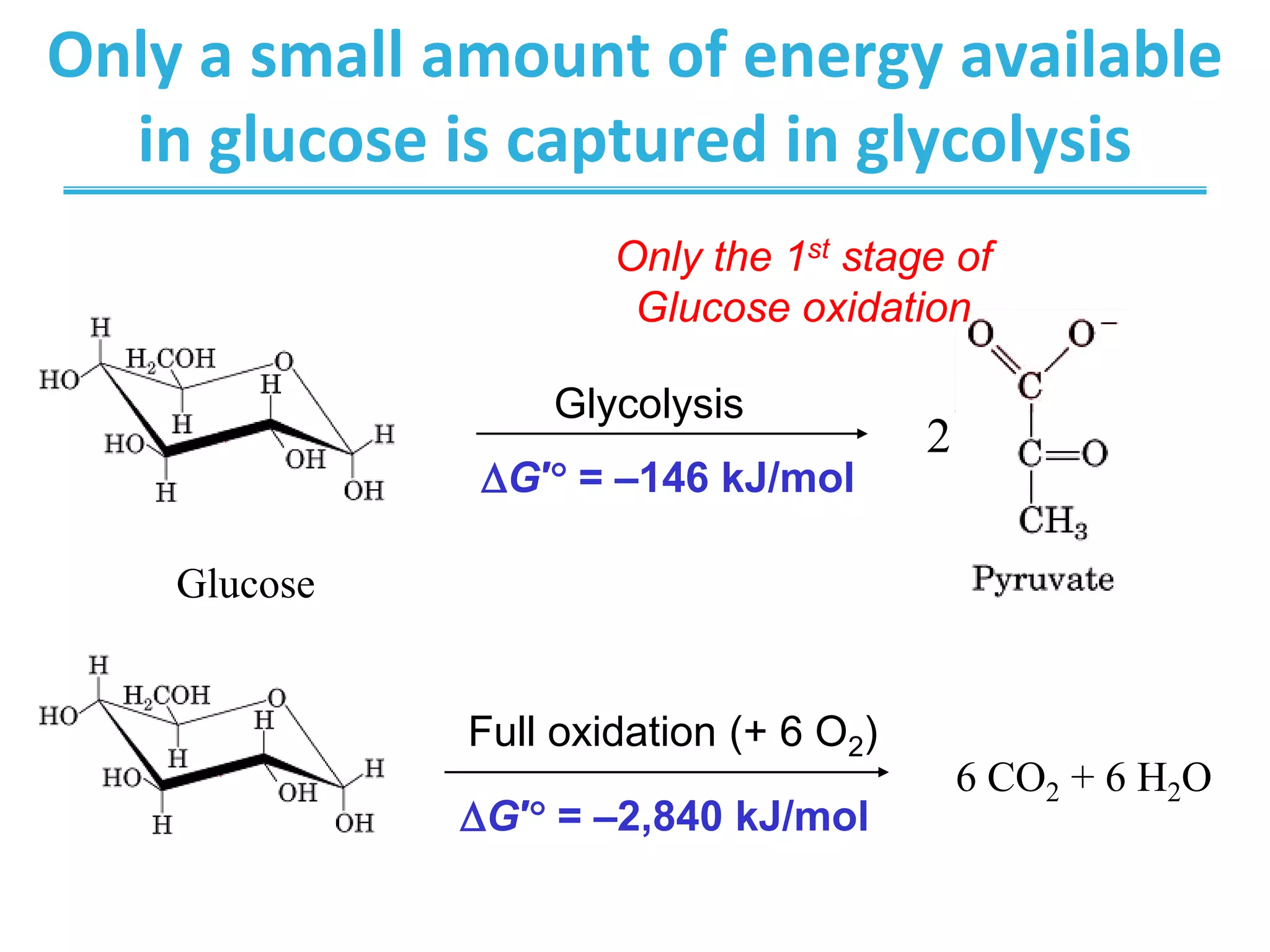


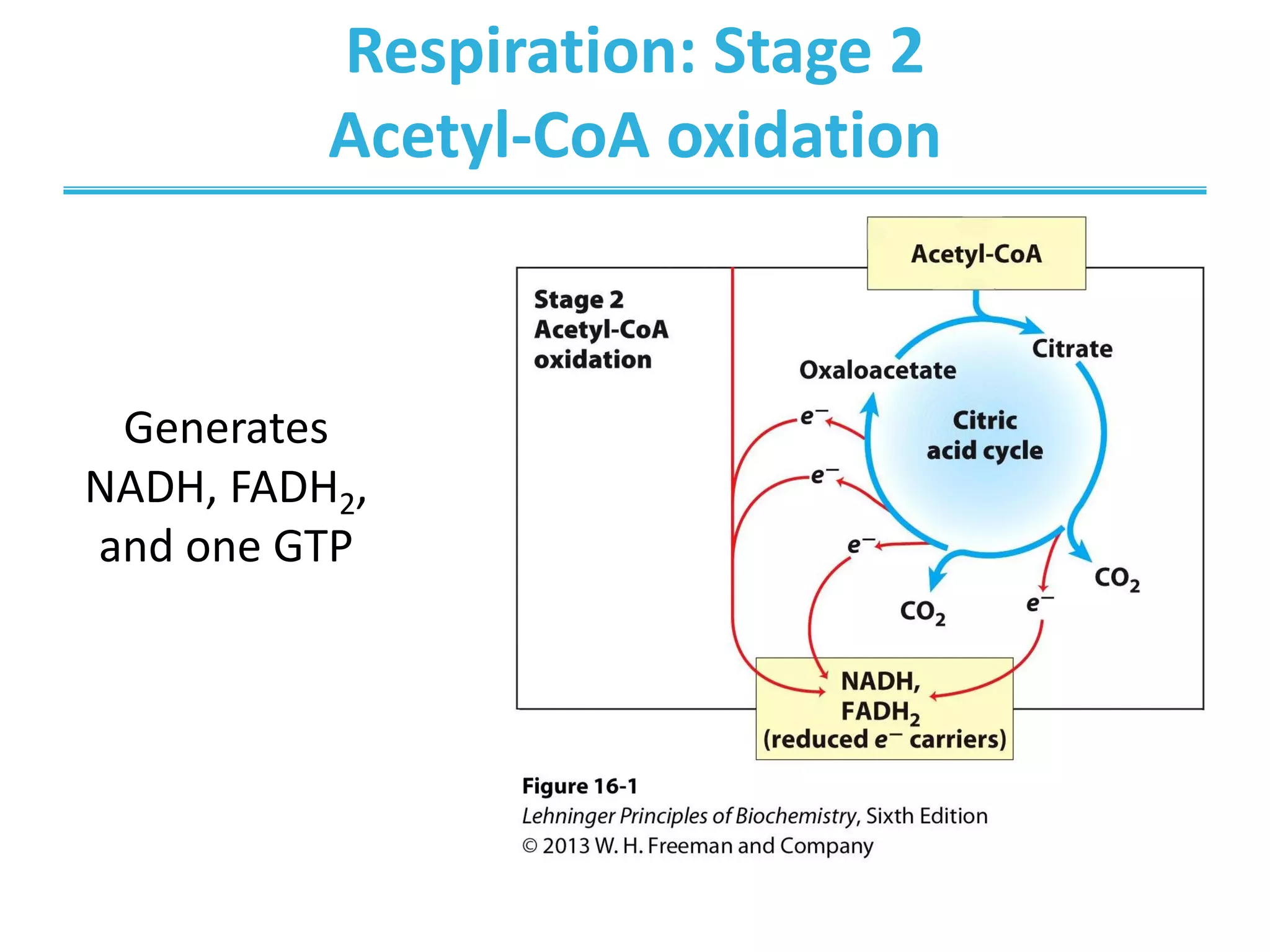









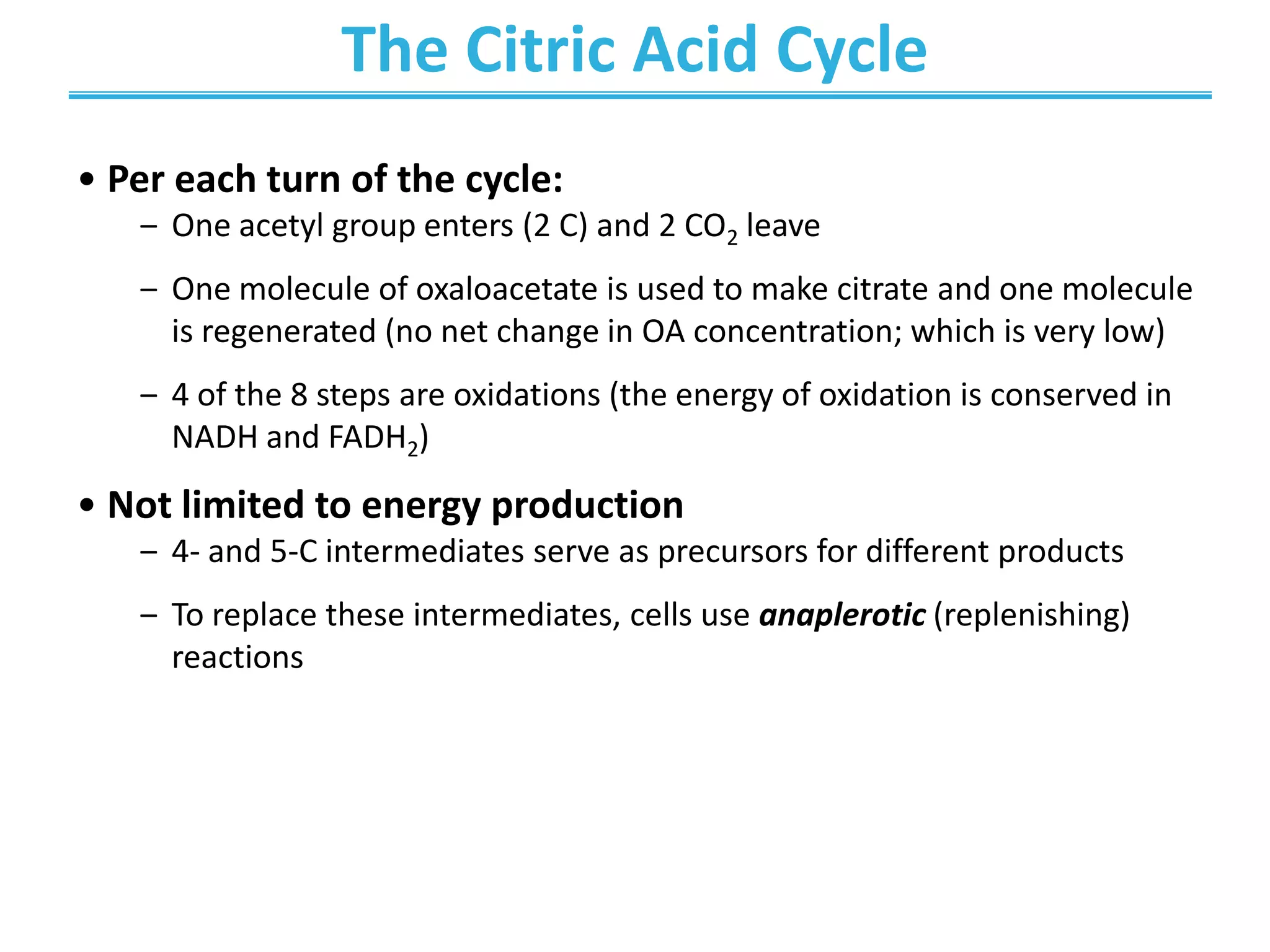

![C-C Bond Formation by Condensation of
Acetyl-CoA and Oxaloacetate (step 1)
• Condensation of acetyl-CoA
and oxaloacetate
• The only reaction with
C-C bond formation
• Uses Acid/Base Catalysis
– Carbonyl of oxaloacetate
is a good electrophile (stabilization of carbanions)
– Methyl group has been converted to methylene
• Rate-limiting step of CAC
• Activity largely depends on [oxaloacetate]
• Highly thermodynamically favorable/irreversible
– Regulated by substrate availability and product inhibition](https://image.slidesharecdn.com/chapter16-220607210412-d9046456/75/Chapter-16-pdf-17-2048.jpg)
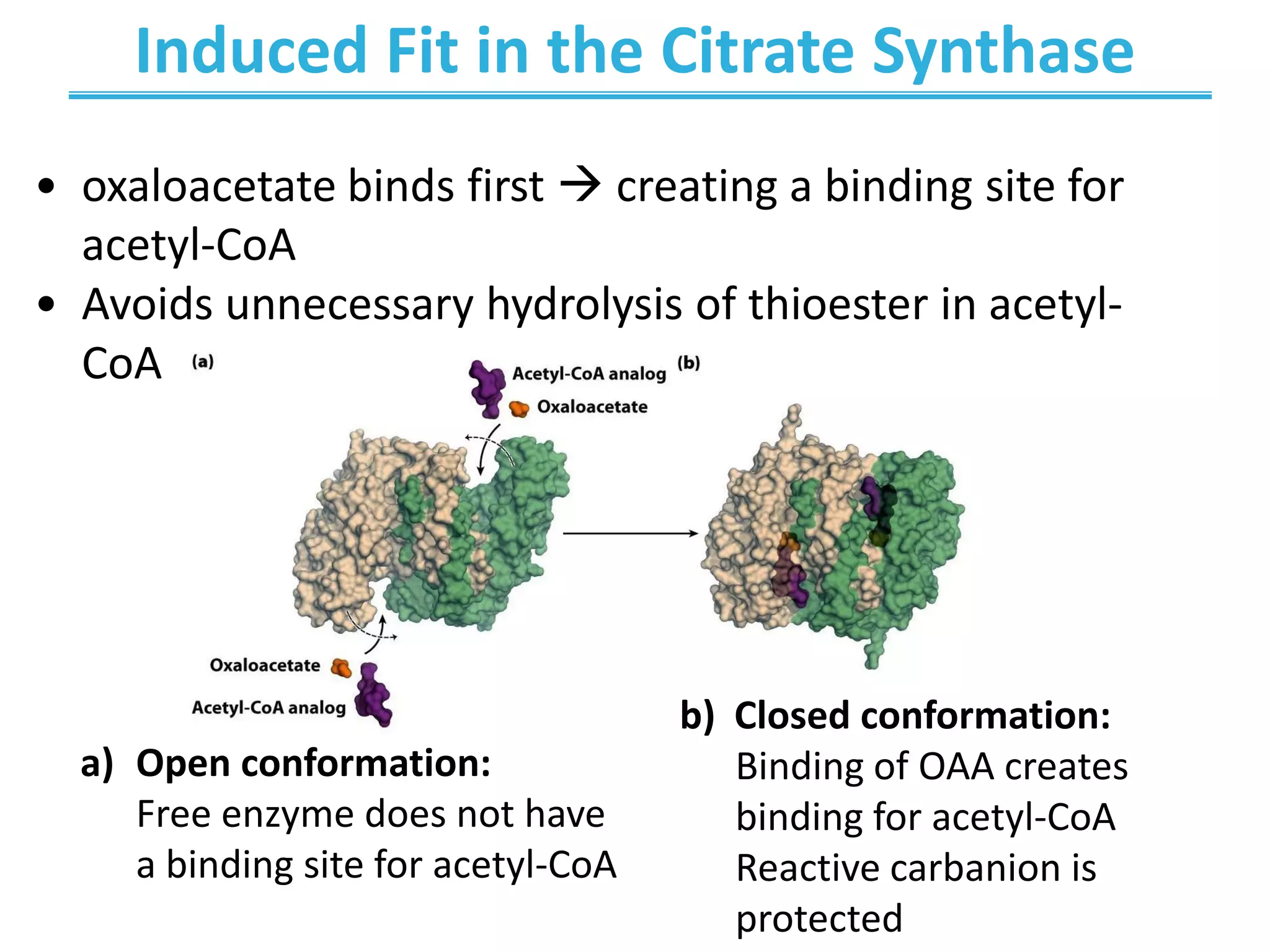
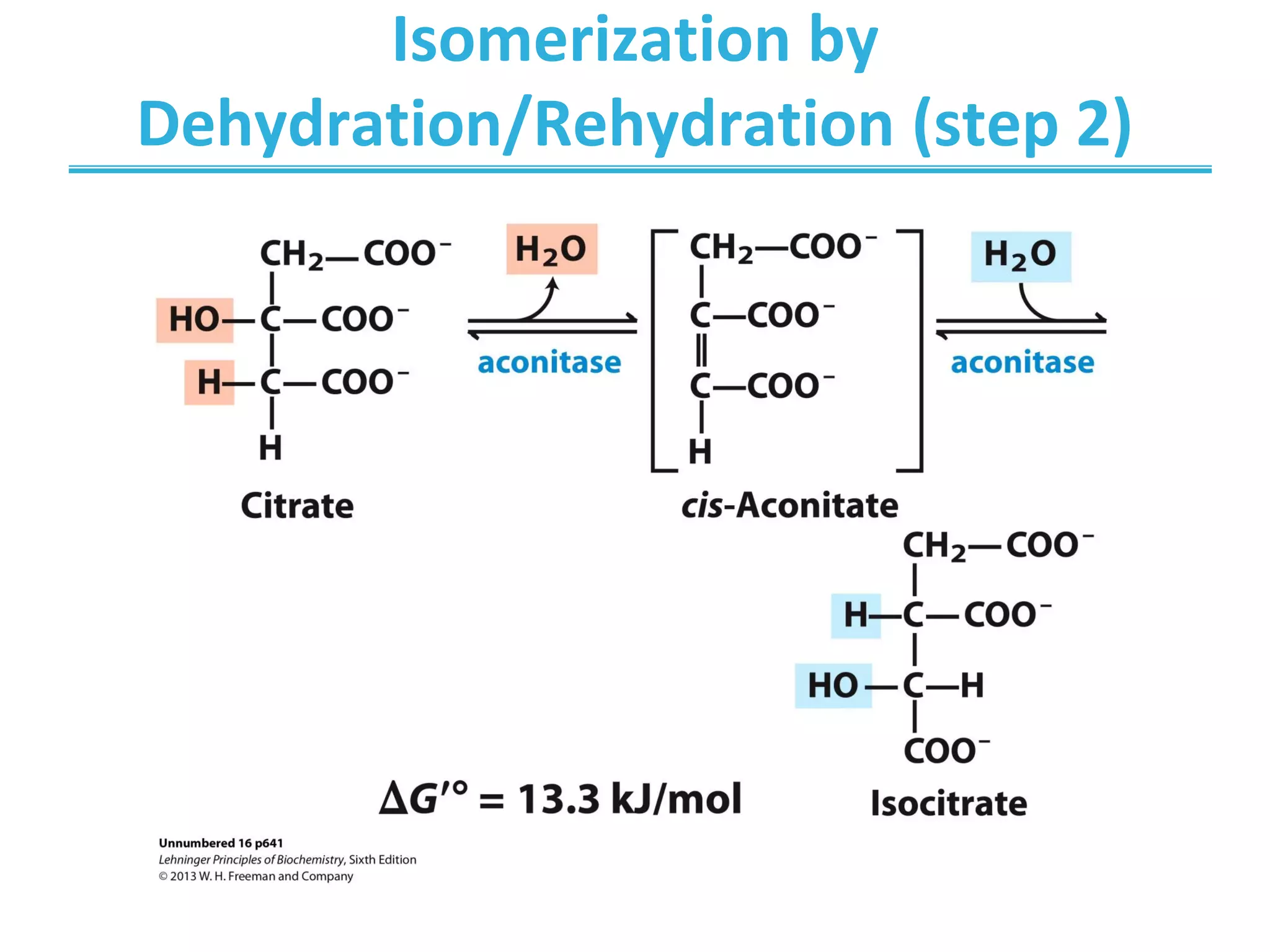


![Aconitase is a “moonlighting” enzyme
• When Fe is deficient, aconitase loses its Fe-S center and acquires
a new role in Fe homeostasis
• Cytosolic Aconitase is an enzyme (with Fe-S) and a regulator of
protein synthesis ( – Fe)
• In humans Fe levels must be regulated: too little anemia; too
much liver damage
• Transferrin: carries Fe in the blood
• Transferrin receptor: receives and endocytoses Fe
• Ferritin: stores excess Fe inside the cells
• Apoaconitase ( – Fe) regulates protein levels by stabilizing or
destabilizing the mRNA of transferrin receptor or ferritin
• Apoaconitase ferritin and TfR synthesis (the results
would be an increase in cellular [Fe])](https://image.slidesharecdn.com/chapter16-220607210412-d9046456/75/Chapter-16-pdf-22-2048.jpg)

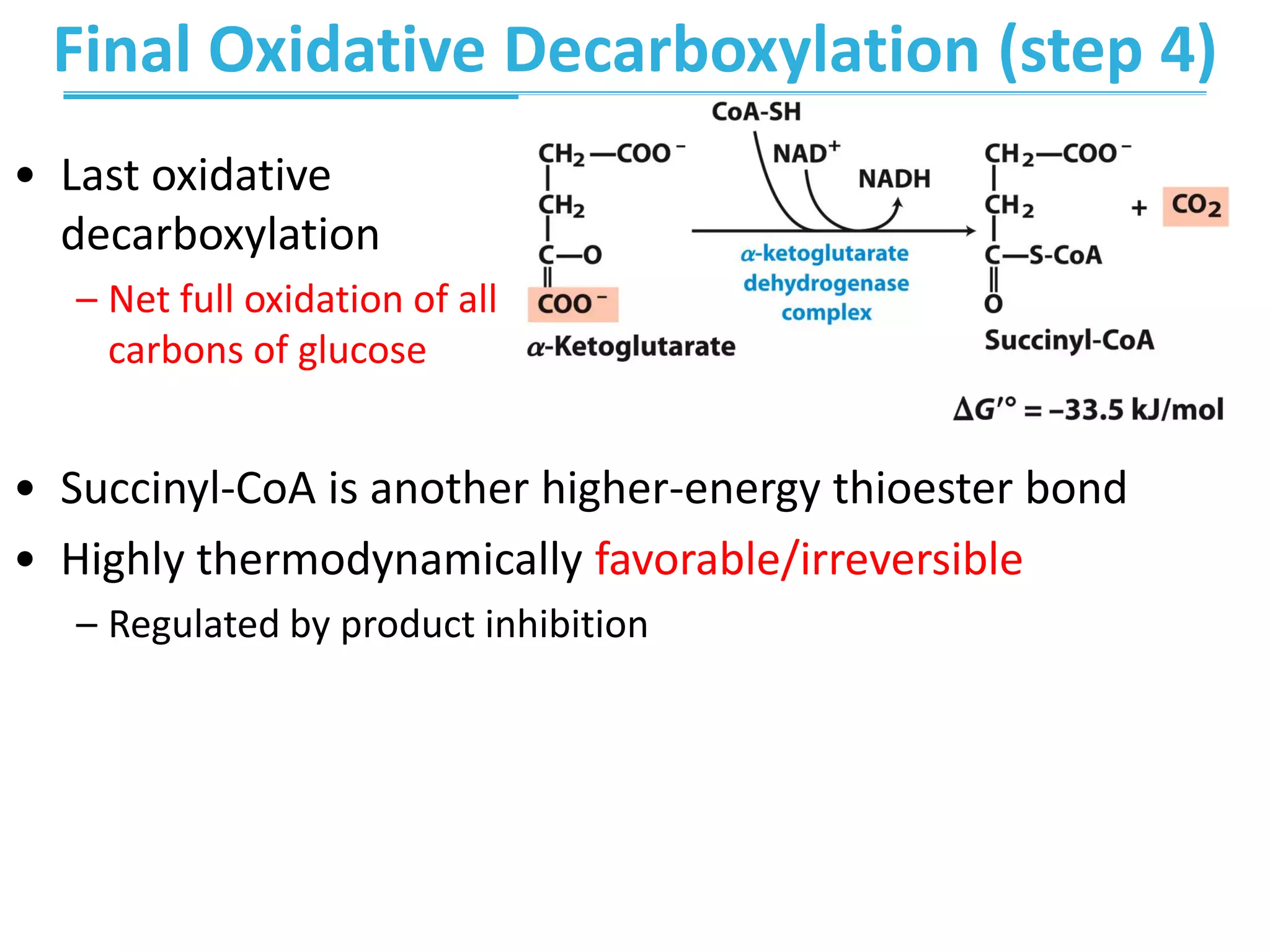
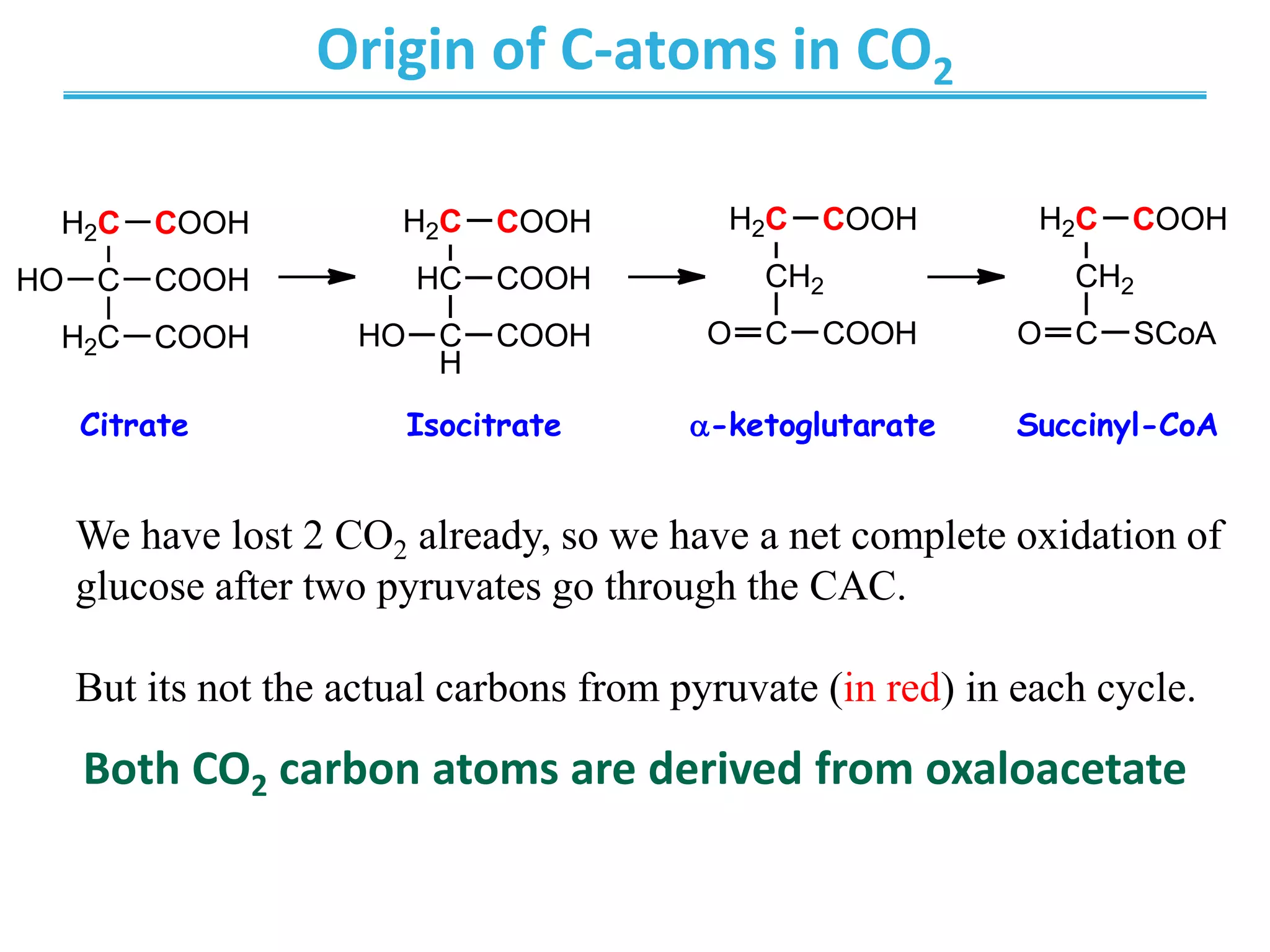





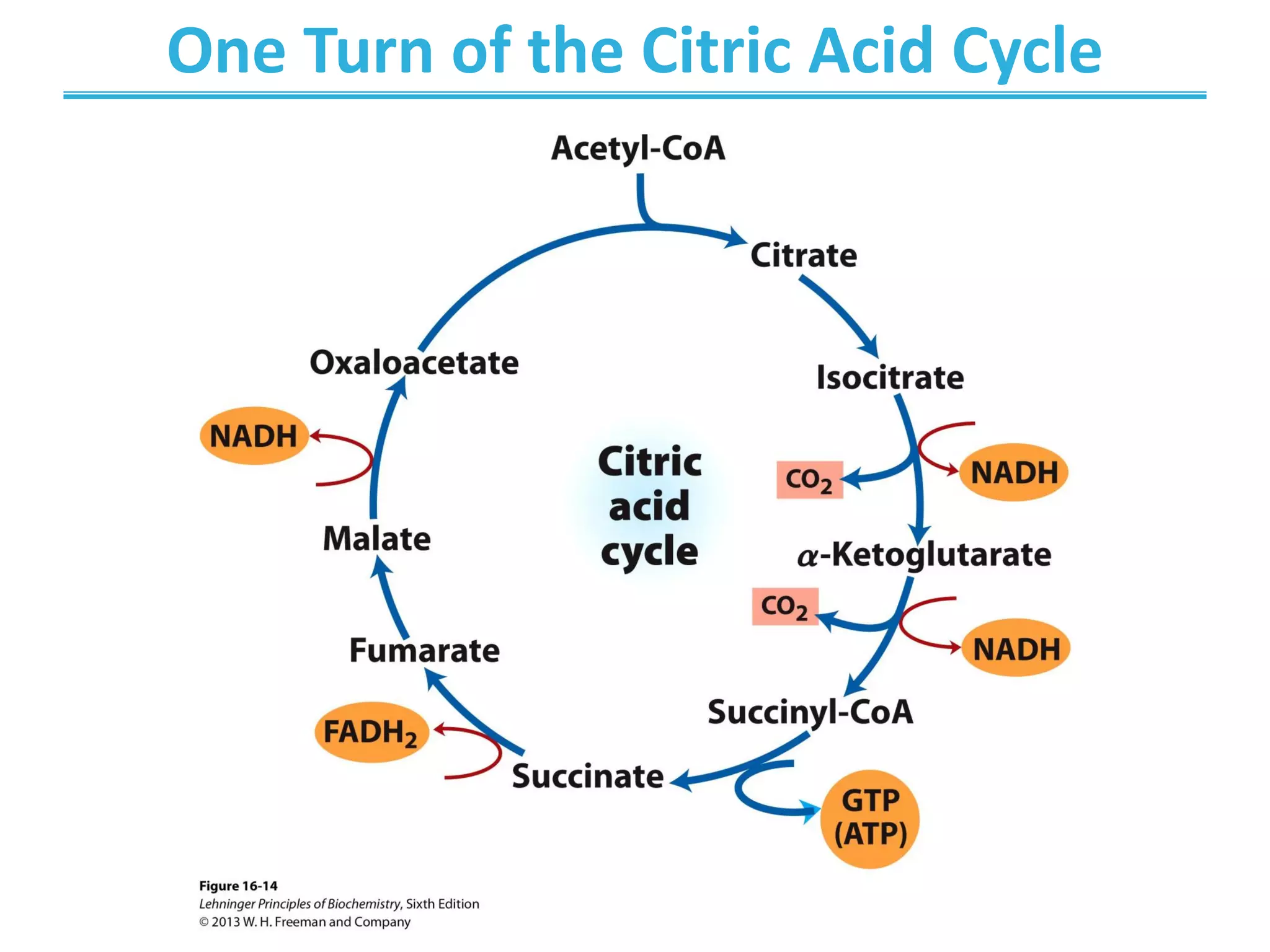




![Anaplerotic Reactions
• Must replenish the intermediates in order for the
cycle and central metabolic pathway to continue
• 4-carbon intermediates are formed by carboxylation
of 3-carbon precursors
• The replenishing and consuming reactions are in
dynamic balance ([CAC intermediates] is ~ constant)](https://image.slidesharecdn.com/chapter16-220607210412-d9046456/75/Chapter-16-pdf-36-2048.jpg)
![Anaplerotic Reactions
• Must replenish the intermediates in order for the
cycle and central metabolic pathway to continue
• 4-carbon intermediates are formed by carboxylation
of 3-carbon precursors
• The replenishing and consuming reactions are in
dynamic balance ([CAC intermediates] is ~ constant)
• Regulatory enzyme – inactive in the absence of
acetyl-CoA
• More acetyl-CoA, more activity more OAA to
react with acetyl-CoA to start the cycle](https://image.slidesharecdn.com/chapter16-220607210412-d9046456/75/Chapter-16-pdf-37-2048.jpg)

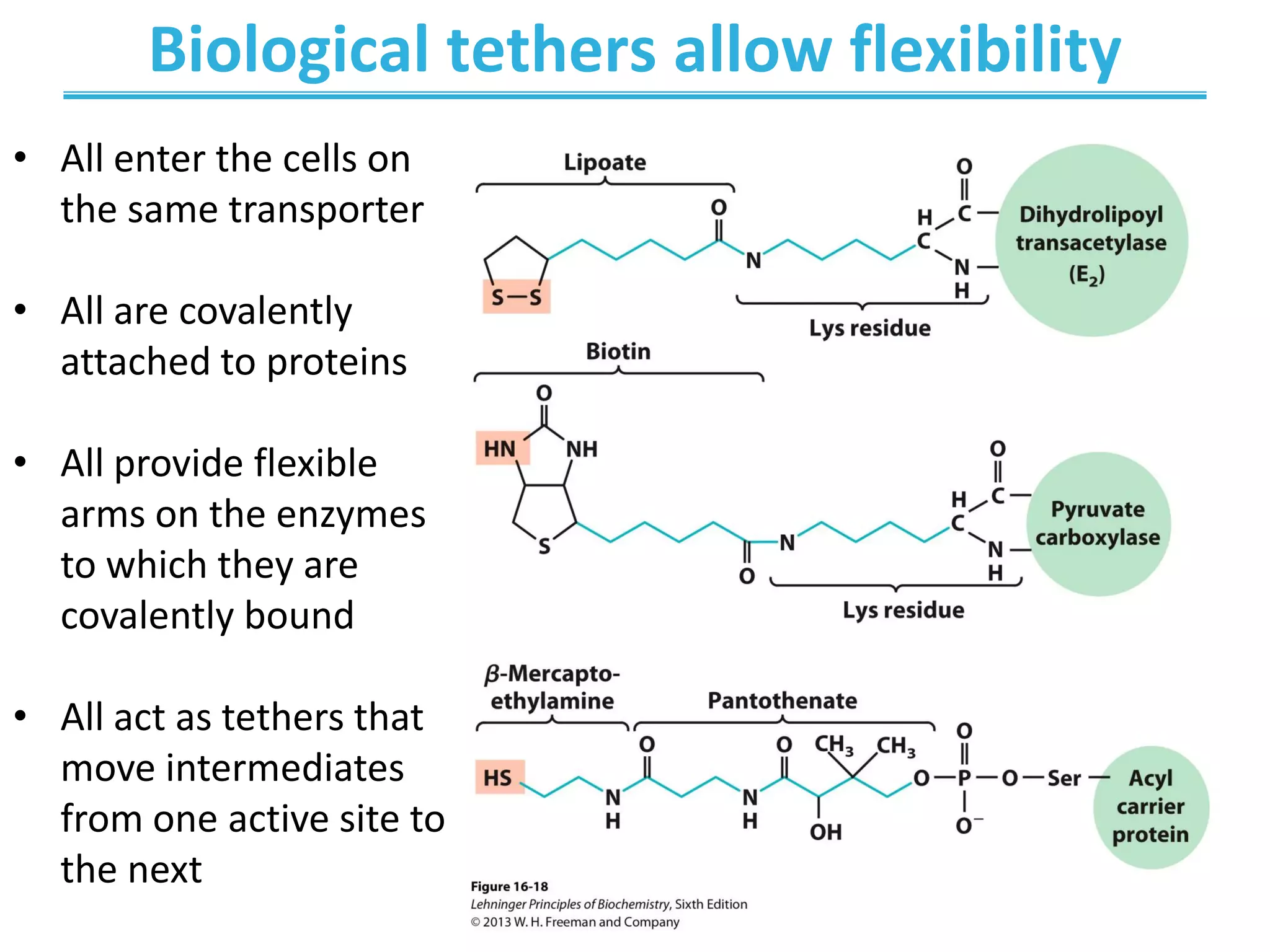
![Regulation of the Citric Acid Cycle
Cell has high energy
demands!
Cell is supplied with
enough energy
[NADH]/[NAD+] and
[ATP]/[ADP] are
high](https://image.slidesharecdn.com/chapter16-220607210412-d9046456/75/Chapter-16-pdf-40-2048.jpg)




